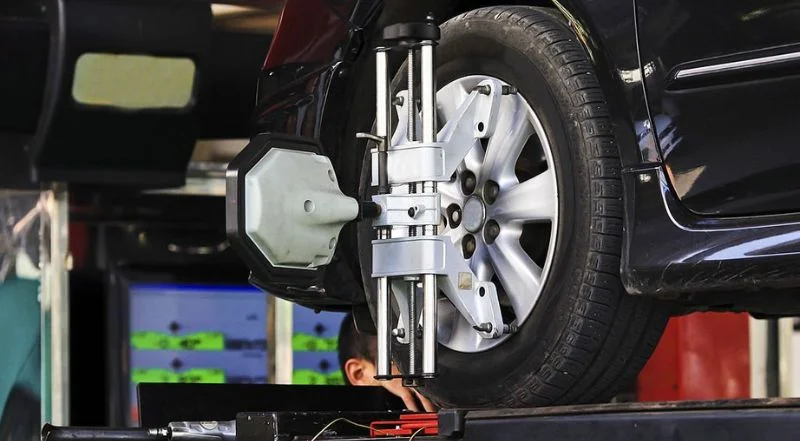What Is Wheel Alignment And What Are Its Benefits?
Have you ever wondered why your car keeps rolling away from you even though you’ve got the brake pedal pressed? Maybe it’s because you don’t know enough about wheel alignment. In case you missed out, here is the answer to your question.
What Is Wheel Alignment?
Wheel alignment refers to maintaining proper caster angle and toe angles. The concept behind this is that once you adjust these angles properly, the vehicle would turn smoothly without causing the wheels from veering off-course.
The caster angle is the tilt angle of the front or rear wheels relative to the direction of travel (or centerline). This tilt angle affects steering characteristics and stability. If the camber angle is too high, the Tyre tread won’t contact the road surface evenly. As result, the handling characteristics will be poor. On the other hand, if the camber angle is low, the Tyres will roll over the edges of the rims and rub against the fender. The rubbing causes damage to the Tyre and eventually leads to premature wear.
Every six months, you should check the caster angle for optimum performance. Wheel aligners are now created using 3D technology, so you no longer need to worry about wheel alignment in the modern world. These 3D wheel alignment tools are precise and reliable. They can detect any misalignment within a few millimetres.
Benefits of Wheel Alignment
Many people think that wheel alignment is just something done before purchasing a car. However, in reality, wheel alignment is an essential part of keeping your vehicle running smoothly.
Here’s a quick overview of wheel alignment and some of the benefits of getting it regularly checked:
- Improves handling & fuel efficiency – Over time, wheels wear down and rub together causing suspension damage. To prevent unnecessary wear, alignments are typically recommended between 9,000-10,000 miles. When properly aligned, tyres contact the road evenly increasing traction, decreasing tyre wear, reducing tyre noise, and increasing fuel economy.
- Preventive maintenance – Properly aligned wheels reduce the risk of costly repairs caused by uneven braking forces. In addition, the use of unaligned tyres on a vehicle can cause damage to the vehicle’s suspension system. For example, if an unaligned tyre is used in conjunction with a low-profile tyre, the wheel well of the vehicle may be damaged by the lower-profile tyre.
- Reduces risks of accidents – Unaligned vehicles may contribute to accidents due to loss of control, increased stopping distances, and slower response times.
- Increases safety & reliability – Poor wheel alignments can cause issues with steering, acceleration, and braking leaving drivers stranded or risking life and property.
- Maintains roadworthiness – Uneven tyre tread leads to tyre failures and premature tyre replacement. This will increase your cost of maintenance.
- Increases vehicle value – You won’t have to worry about selling your car in the future because well-maintained vehicles sell faster and fetch higher prices.
- Improves the appearance – Good quality wheels look much nicer when well aligned. The alignment of your vehicle’s wheels is one of the most important things you can do to keep them looking great and driving smoothly. If your wheels are out of alignment, they will not only be more likely to wear prematurely but also cause a lot of noise as they rub against each other.
Conclusion
Wheel alignment is one of the important things that should be checked on a regular basis to keep your vehicle in good condition and to ensure your safety. It is very easy to get this service done at a local garage, however, it is always better to go through a professional who has experience in doing such work.




